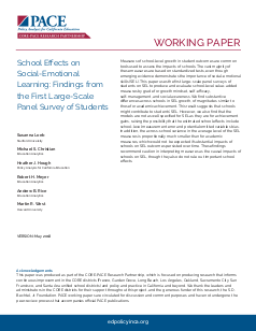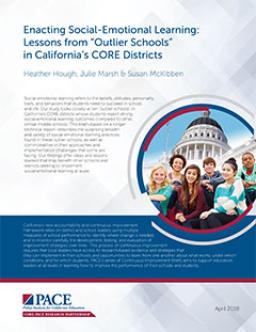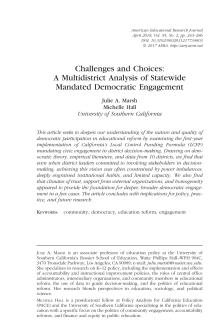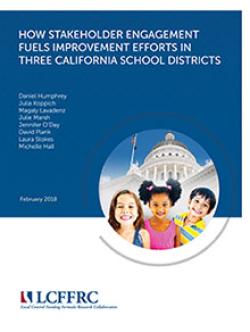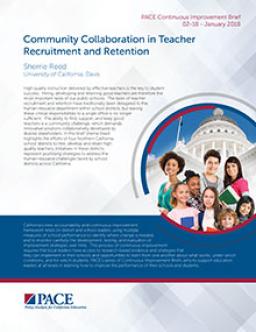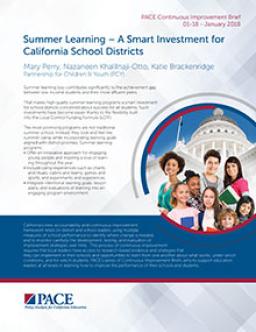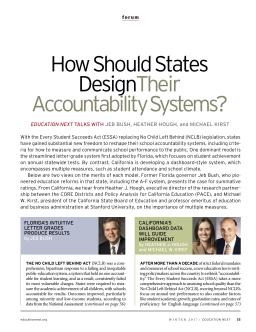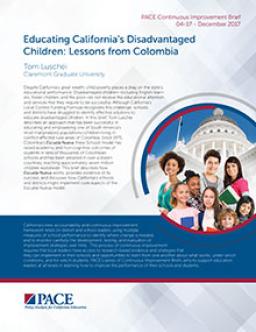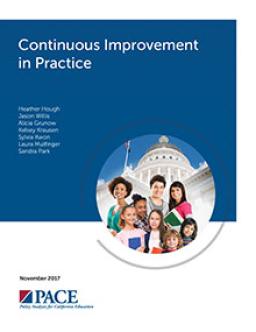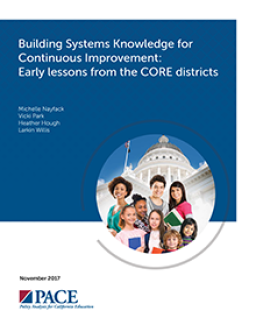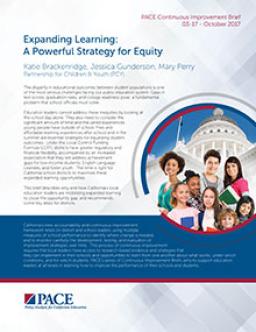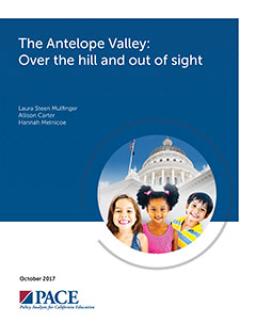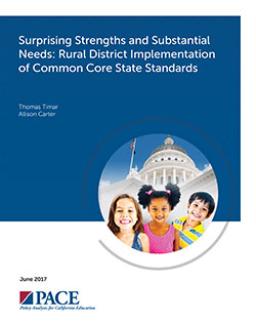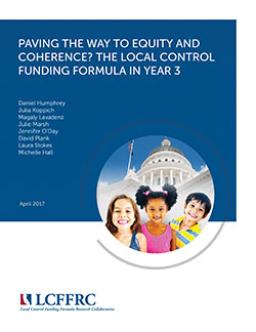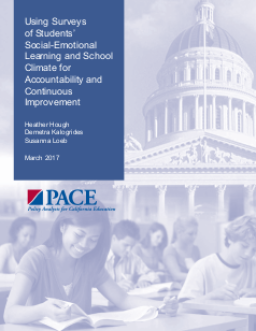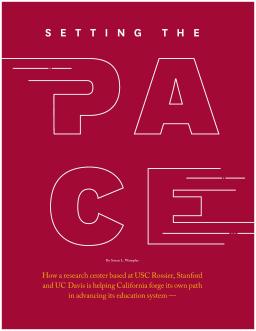Summary
Summary
This study explores ten "outlier schools" in California's CORE districts that have strong social-emotional learning outcomes. The brief and infographic summarize the various practices found in these schools and the common implementation challenges faced. The findings offer lessons that can help other schools and districts implement social-emotional learning at scale.
Summary
Summary
Summary
Summary
Summary
Teacher recruitment and retention are critical responsibilities of school districts. The challenge of finding, supporting and retaining good teachers requires innovative solutions collaboratively developed by diverse stakeholders. This brief highlights the efforts of four Northern California school districts to address human resource challenges and hire, develop and retain high quality teachers, which represent promising strategies for other districts across California.
Summary
Summary
Summary
Summary
Summary
Summary
Summary
Summary
Many parts of California, particularly rural and desert areas, are often overlooked by policymakers and researchers, despite the growing number of students attending school there. The Antelope Valley region has seen steady increases in student enrollment, particularly of Hispanic/Latino(a) and African American students, English learners, and foster youth. This report highlights the needs of the Antelope Valley Union High School District and its feeder districts, and calls for greater focus on supporting high-needs populations outside of urban centers.
Summary
The Local Control Funding Formula gives local education leaders more power to allocate resources, but requires strategic budgeting practices to prioritize goals and make necessary tradeoffs. Three recommendations include integrating budgeting with strategic planning, focusing on critical questions, and developing internal structures to sustain strategic budgeting. These practices improve district policies and performance of local schools and students.
Summary
Summary
Summary
Summary
Summary
Summary
The use of social-emotional learning (SEL) and school culture/climate (CC) measures is a promising way to understand school performance. SEL and CC measures are reliable, distinguish between schools, and relate to academic and non-academic measures. They can identify areas for improvement within schools, such as subgroup gaps. Incorporating these measures into higher stakes accountability systems requires further research.
Summary
Summary
California is implementing four new policy initiatives for education, including the Common Core State Standards and a new accountability system. PACE provides research-based information to help drive continuous improvement in schools. Alternative schools are available for vulnerable students, but the current accountability system does not adequately address their needs. The California Department of Education is considering the development of a new accountability system for alternative schools that aligns with Local Control Accountability Plans.
